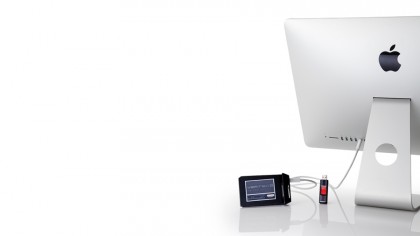Fusion drive: what it is and how it speeds up your Mac
The advantage of your Mac's hybrid drive
Under any circumstances, it's wise to keep an up-to-date backup of your Mac's contents. OS X's Time Machine feature will back up a Fusion Drive just the same as it would a hard drive, and it's a good idea to use it because the contents are more susceptible to loss due to the increased risk that either of the two pieces of hardware fails.
In our testing of two 21.5-inch iMacs - one with a hard drive and the other with a Fusion Drive - OS X's System Information app revealed that the hard drives in both had the same model number and rotational speed. The smaller iMac uses a 2.5-inch, 5400rpm drive. However, Apple has stuck with 3.5-inch, 7200rpm drives in the 27-inch iMac, which are capable of faster transfer rates. However, they fall far short of flash storage's capabilities.
Our benchmarks show the speeds reached by a hard drive and a Fusion Drive in two 21.5-inch iMacs. The gap in their performance is really quite significant.
Fusion Drive and Boot Camp
Since Fusion Drive depends on software technology built into OS X, Windows doesn't support it. This doesn't mean Windows can't be installed on a Mac with a Fusion Drive, but Boot Camp Assistant will only create a partition on the hard drive.
However, there is an issue with installing on a 3TB drive, whether that's a Fusion Drive or a garden-variety hard drive. Apple acknowledges that Boot Camp Assistant won't work with drives of this capacity. The maker of WinClone, an app which backs up Boot Camp partitions from within OS X, detailed the reason for this and how to overcome it.
Some commenters on the blog entry report stumbling at the final step, and even if it works for you, there's a side effect that might discourage you from trying it. It splits the hard drive portion of your Fusion Drive into three partitions. OS X continues to see the first one as part of the Fusion Drive, Windows can be installed on the second one, and the last 1TB of the drive becomes a separate volume. It's usable, but OS X no longer sees it as part of the Fusion Drive, so it loses the ability to include that capacity in its shifting around of data.
There's no word as yet about an update to Boot Camp Assistant, or if an improved version will ship with the next version of OS X.
Get daily insight, inspiration and deals in your inbox
Sign up for breaking news, reviews, opinion, top tech deals, and more.
Homemade Fusion Drive

Among Patrick Stein's posts about Fusion Drive, he published instructions on how to use the command-line version of Disk Utility to create your own Fusion Drive from any two drives connected to a Mac. The Mac must support Mountain Lion, which is needed for Fusion Drive support. Specifically, it requires the installer for OS X 10.8.2 from the Mac App Store.
There's little reason to create your own Fusion Drive unless one of the drives is capable of very fast transfer rates though. That depends not just on the drive but also its connection to the Mac.
To get a real benefit requires, among other things, a Mac with Thunderbolt, a Mac Pro with an SSD, or a willingness to make major internal changes to other models. For instance, on a MacBook Pro, you'll need to install a kit such as OWC's Data Doubler ($45, about £30, bit.ly/jjIab5), which converts the bay normally occupied by the SuperDrive to hold a 2.5-inch drive instead. The hard drive needs to be moved there, since that bay typically uses a slower connection that would impede an SSD's performance.
Even then, MacBook Pros introduced prior to 2011 use a SATA-II connection, which impedes the transfer rate of modern, SATA-III SSDs. Apple doesn't intend you to set up your own Fusion Drive.